If you are visiting Tokyo, Japan, for the first time, it can be hard to know where to go and what to see first. And if you only have 48 hours in Tokyo, you’ll need to plan your itinerary carefully to get the most out of one of the world’s most incredible cities. Our guide to 15 fantastic things to do in Tokyo for first timers has something for everyone.
So, what are you waiting for? Start reading and planning a trip to Japan!
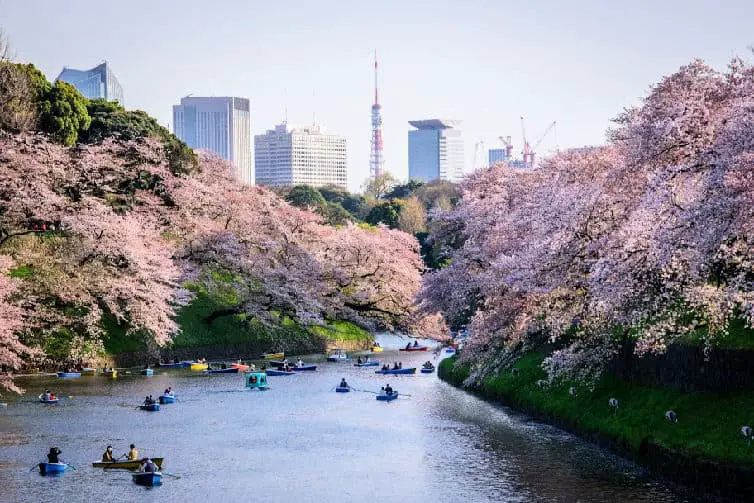
15 fantastic things to do in Tokyo for first timers
There’s nowhere else quite like Tokyo, with its amazing mix of modern skyscrapers, historical temples, serene tea ceremonies and pop culture. I admit to being overwhelmed at the size of the city, the complexity of its efficient metro system, and about what to do to maximize my time in Tokyo.
And without a doubt, two days in Tokyo isn’t nearly enough to really get to know the city properly. But if you’ve just a week exploring Hokkaido (like me) and that’s all the time you have, don’t worry. You can still get a wonderful taste of Tokyo’s culture, food and history. My helpful list contains a variety of must-see Tokyo tourist attractions, both new and old, to help you experience the best of Japanese culture.
I’ve also added some hotel recommendations to help you plan your Tokyo accommodation. And included helpful transportation tips, using central Shinjuku Station as the departure point.
Shibuya Crossing and Shibuya Sky
This Tokyo landmark is so famous that you probably recognize Shibuya Crossing from films and photographs, even if you didn’t already know that it’s the world’s busiest intersection.
Massive video screens display brightly coloured advertisements as throngs of tourists and locals wait at each corner of Shibuya Crossing for the lights to turn green.
Around half a million people flood over the Shibuya ‘Scramble’ Square daily, and tourists snapping photos make the crowds even bigger.
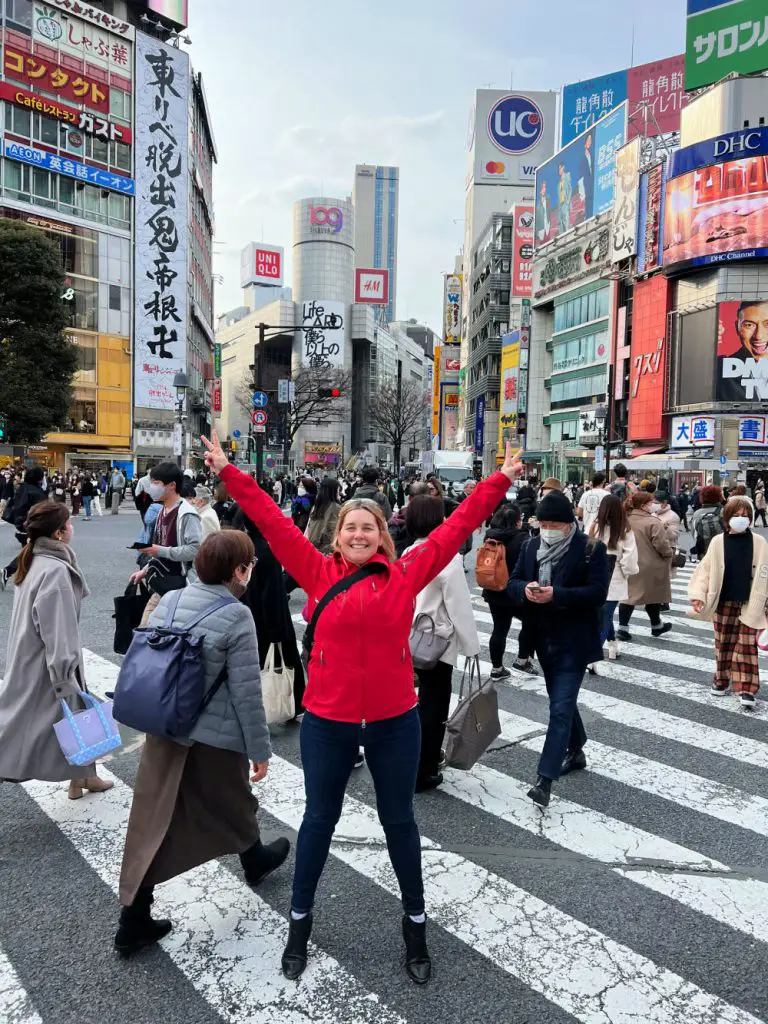
Visit Shibuya Crossing at dusk for the best photo opportunities, as the neon lights illuminate the crossing and everyone in it.
Or, if you’d prefer to watch the chaos from above, head to the Shibuya Sky rooftop observatory for a view from 230m above the intersection.
You’ll get fabulous city and crossing views in every direction from Shibuya Sky. It’s the perfect spot to truly appreciate how big Tokyo really is. And to grab that perfect city selfie.
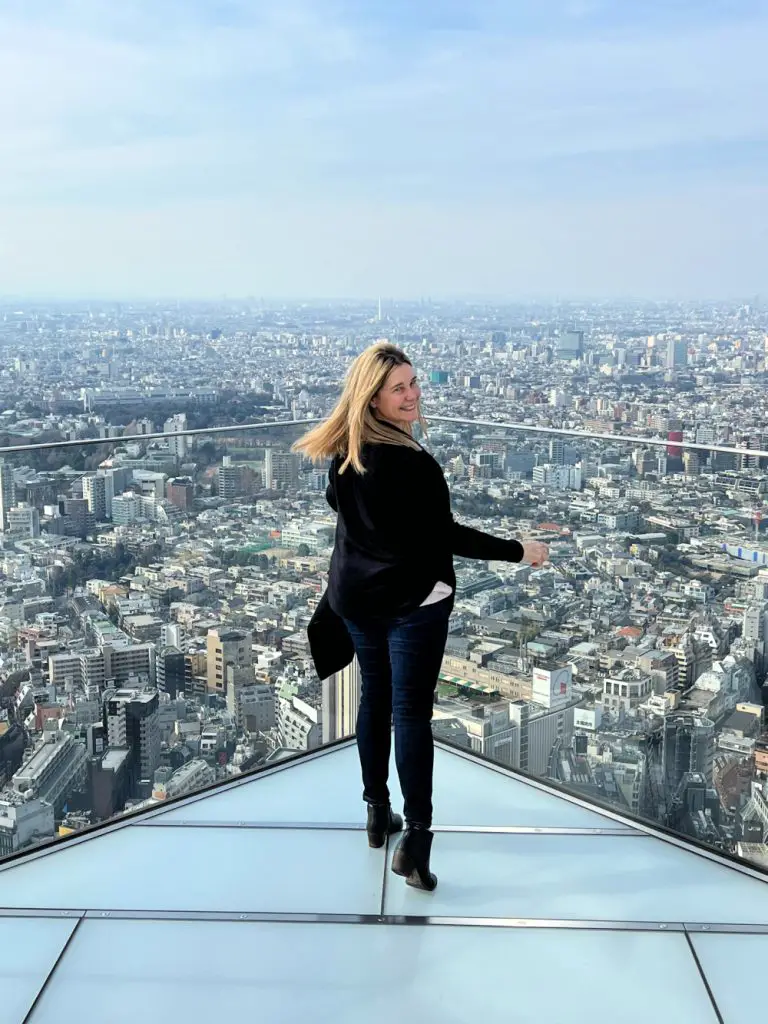
How to get there: From Shinjuku Station, take the Yamanote Line to Shibuya Station.
Use the map below to search for hotel and short-term rental options
Find the Hachiko Statue
Tokyo’s unofficial meeting point can be found near Shibuya Crossing, in the heart of the city. The Hachiko Statue honours the memory of the devoted Akita dog who waited every day for his master at Shibuya Station, even after his master’s passing in 1925.
It’s a popular Instagram spot too and crowded with people. So if you’re planning on meeting friends here, be sure to specify exactly where near the statue, if you want to find them!
How to get there: From Shinjuku Station, take the Yamanote Line to Shibuya Station.

Visit the Harajuku neighbourhood
Do you love Japanese fashion and Kawaii culture? If so, you’ve probably already got ‘visit Harajuku’ on your Tokyo itinerary!
There are so many things to see in Harajuku, and this area of Tokyo is crammed full of trendy shopping malls, stylish boutiques and cafes serving cute and colourful food.
Think giant rainbow cotton candy, strawberry crepes and coffees decorated with intricate 3D latte art of your favorite anime or Miyazaki character at Reissue Café.
Takeshita Street is the home of Japanese teenage culture, where you can find all sorts of fashion items at affordable prices. You’re also sure to see those famous Harajuku girls walking by in eye-popping style. Harajuku is perfect for people-watching.
Whether you’re heavily into Kawaii culture or just want to see what all the fuss is about, a visit to Harajuku is one of the most fun things to do in Tokyo.
How to get there: From Shinjuku Station, take the Yamanote Line to Harajuku Station.
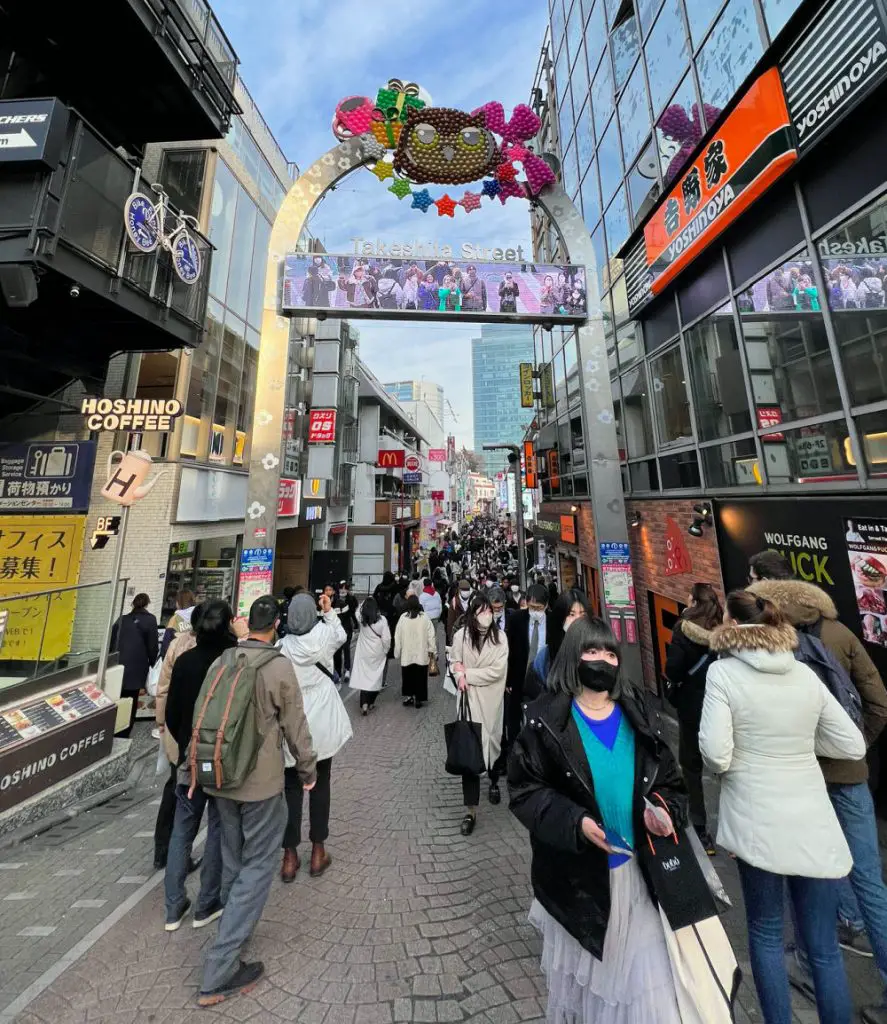
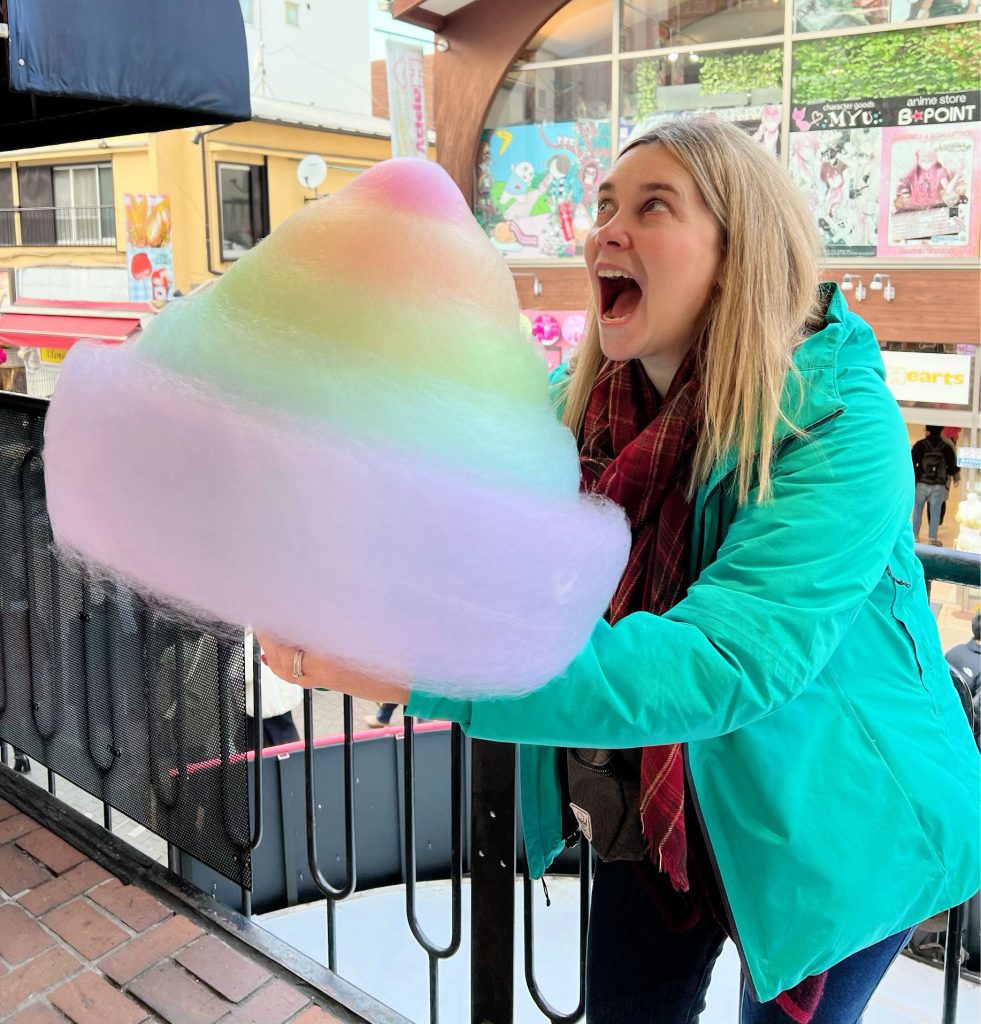

Visit Meiji Shrine
Though Japan is not an overtly devout country, the Shinto religion remains of great cultural importance to Japanese people. Japanese visit Shinto shrines to mark important life events, like graduations, marriage, and the birth of children. So, it’s definitely worth visiting at least one of Tokyo’s 4000+ temples and shrines during your stay in the city.
The Meiji Shrine was built in 1920. It’s dedicated to Emperor Meiji, who ruled from 1869 to 1912, and his wife, Empress Shoken. Together they encouraged Japan to modernize. The Empress was also known for her charity work and for promoting women’s education during the Meiji Period.
The original shrine was destroyed in World War II. It was later rebuilt with funds contributed by the public in memory of the Emperor and Empress’ virtues. You can walk on pathways through the thousands of trees planted in the shrine’s beautiful forested grounds and see the impressive torii gates at the shrine’s entrance.
It is important to remember to bow at each torii gate before entering, and to walk on the left side of the gravel pathway. The center is always reserved for Shinto deities.
How to get there: From Shinjuku Station, take the Yamanote Line to Harajuku Station. Or take the Odakyu Line to Sangubashi Station.

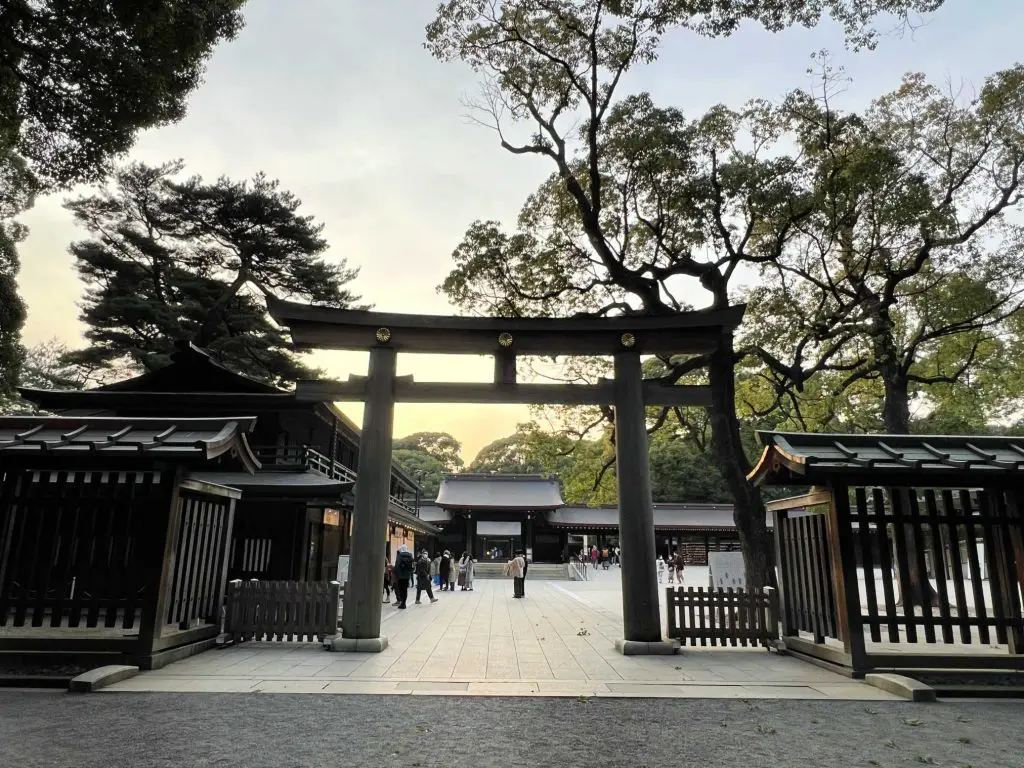
Need more Tokyo time? Check out this 7 day Tokyo itinerary
Explore Sensoji Temple and Asakusa
On the topic of shrines, explore Tokyo’s oldest Buddhist temple, Sensoji, and the surrounding traditional neighborhood of Asakusa. Nakamise, a narrow shopping street has shops and food stalls. It’s found between the temple’s outer gate and its second gate, Hozomon.
How to get there: Sensoji Temple is a few steps from Asakusa Station. It’s served by the Ginza Subway Line, Asakusa Subway Line and Tobu Railway.
Immerse into an artistic wonderland at teamLAB Planets
teamLAB Planets is the latest installation from the teamLAB Borderless art collective. It’s an immersive digital art museum show where you take off your shoes to walk through water, wander along mirrored hallways and become one with flowers in two large digital gardens.
The light and sound of the artworks change as you immerse yourself in them. teamLAB Planets blurs the boundaries between people and the art.
You can take as much time as you like while exploring the multi-sensory rooms of teamLAB Planets. I spent nearly two hours immersed in the spaces, particularly the planetarium with floating images of seasonal flowers. It was magical.
teamLAB Planets is a high-tech art experience that is incredibly Instagrammable. It’s definitely one of the most unique places to visit in Tokyo.
Tip: You will be walking in water a few times during your teamLAB Planets experience. Wear pants that can roll up to the knee. Or rent a pair of shorts in the change room, it’s free.
How to get there: From Shinjuku Station, take the Yamanote Line to Shimbashi Station. Then take a bus (or cab) from Toyosu-Shijo to Shijo-Mae Station.
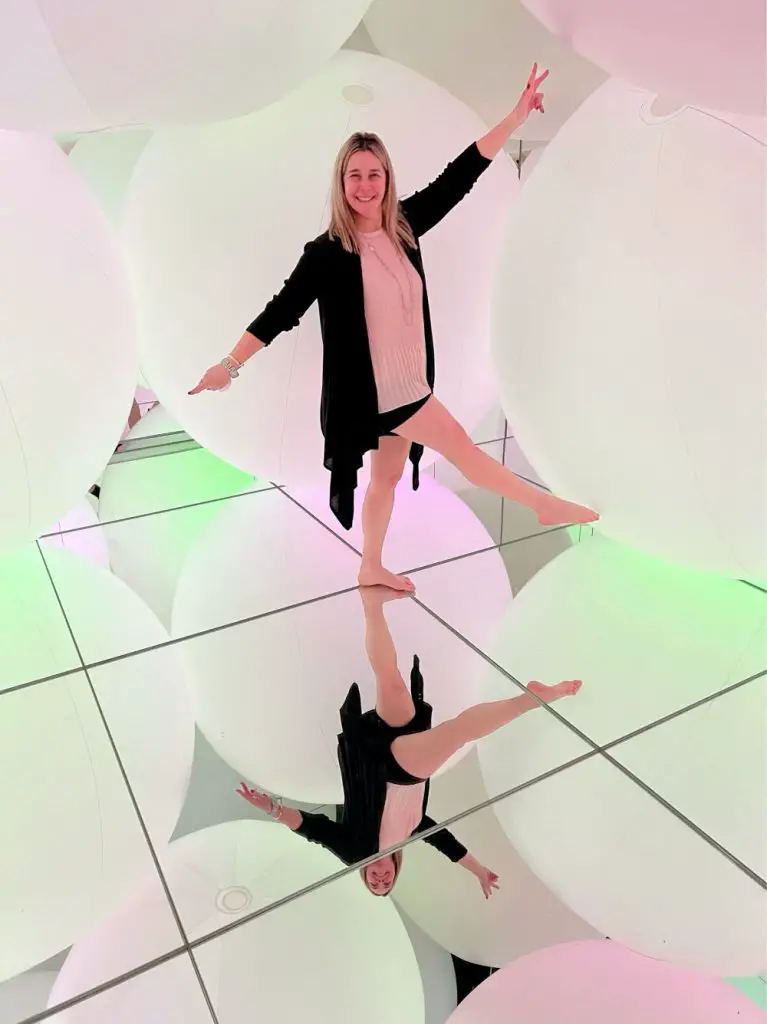
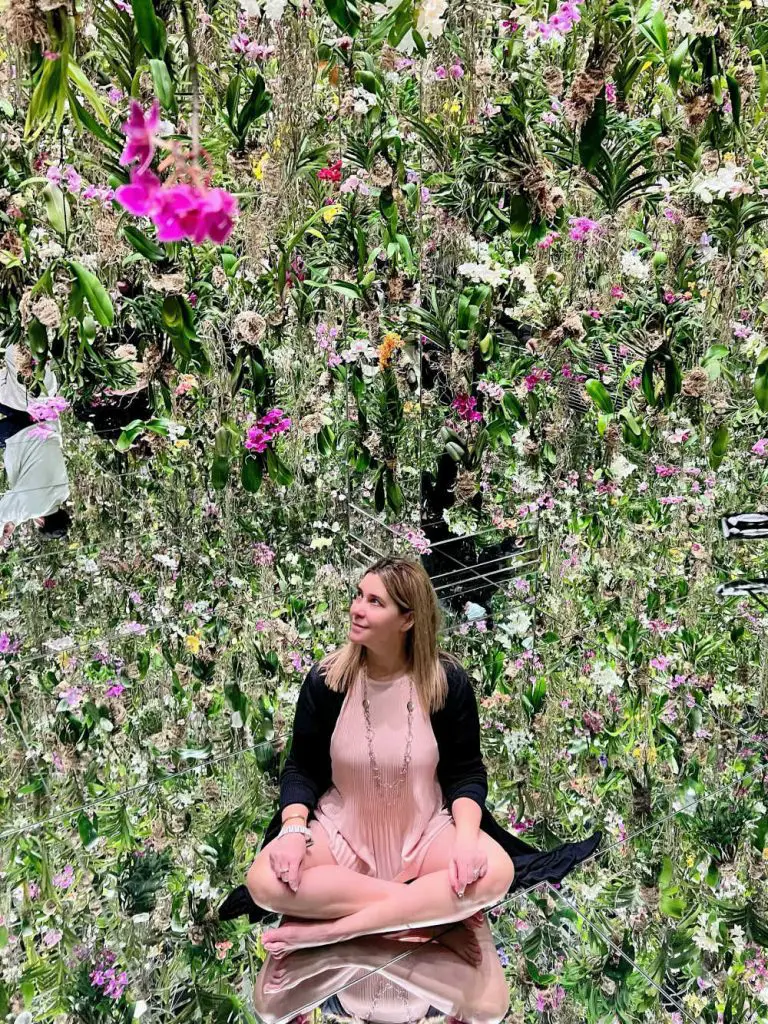
Explore the Ghibli Museum
There are lots of fun things to do in Tokyo, and if you’re a fan of Studio Ghibli animations, then the Ghibli Museum is a must-see addition.
You’ll find it in Mitaka, around 20 km west of Tokyo. But it’s absolutely worth taking a trip out of Tokyo for a visit here.
The Ghibli Museum was designed by Hayao Miyazaki, who directed hugely popular animated films like My Neighbour Totoro, Spirited Away and Princess Mononoke. It has many fascinating exhibits, a theatre showing exclusive Studio Ghibli short films, a rooftop garden and a bookstore.
Tickets are not available at the museum. Be sure to reserve tickets on the Ghibli Museum website before your visit.
How to get there: From Shinjuku Station, take the Chuo Line to Mitaka Station, then walk about 20 minutes to the Museum.
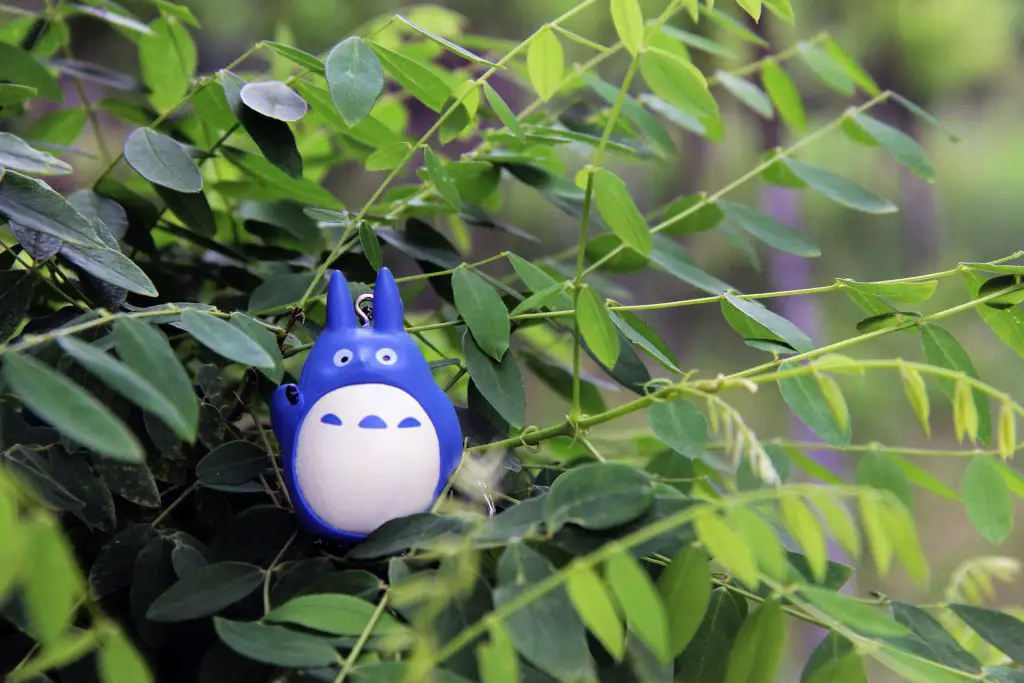
Learn about anime, manga and otaku culture
Otaku (fans) of anime and manga will want to beeline it the largest anime store in the world, Animate Ikebukoro.
The store’s Ikebukoro location is the flagship of Japan’s largest anime chain. It features nine-storeys (plus basement), of manga books, anime videos, merch and theatres. The outdoor park near the complex includes a small Animate Café, serving a rotating selection of anime-themed food and drinks. When I was there, they featured characters from the Golden Kamuy anime, which is based on traditional Ainu culture.
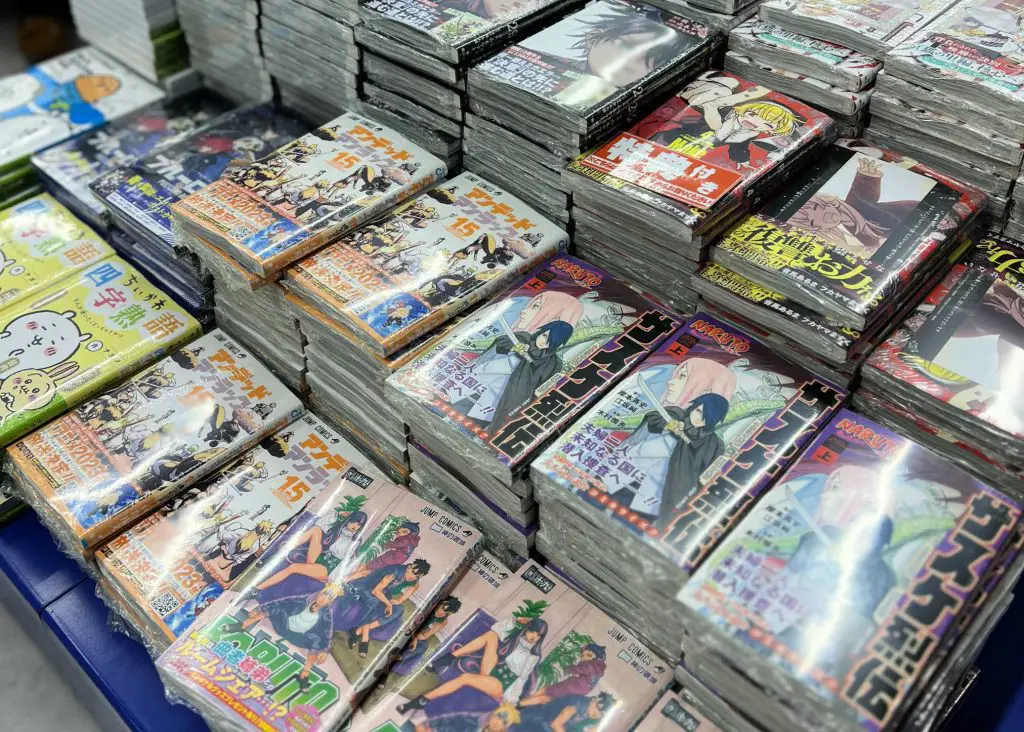
Wander the grounds of the Imperial Palace, Tokyo
The Imperial Palace is just 10 minutes away from Tokyo Station on foot. It’s the main residence of the Emperor of Japan and one of the must-see places to visit in Tokyo.
The complex features stunning gardens, art galleries, and the main ceremonial palace. The Fukiage Palace contains the Emperor’s official residence.
You can visit much of the complex for free, and there are free guided tours, making the Imperial Palace one of the best things to do in Tokyo on a budget. Walk-in registration is possible, but numbers are limited. It’s better to register on the Imperial Palace website ahead of your visit.
One of the best times to visit the Imperial Palace is in the spring, when the cherry trees are in bloom.
How to get there: From Shinjuku Station, take the Chuo Line to Tokyo Station. Then walk 10 minutes to the Palace.
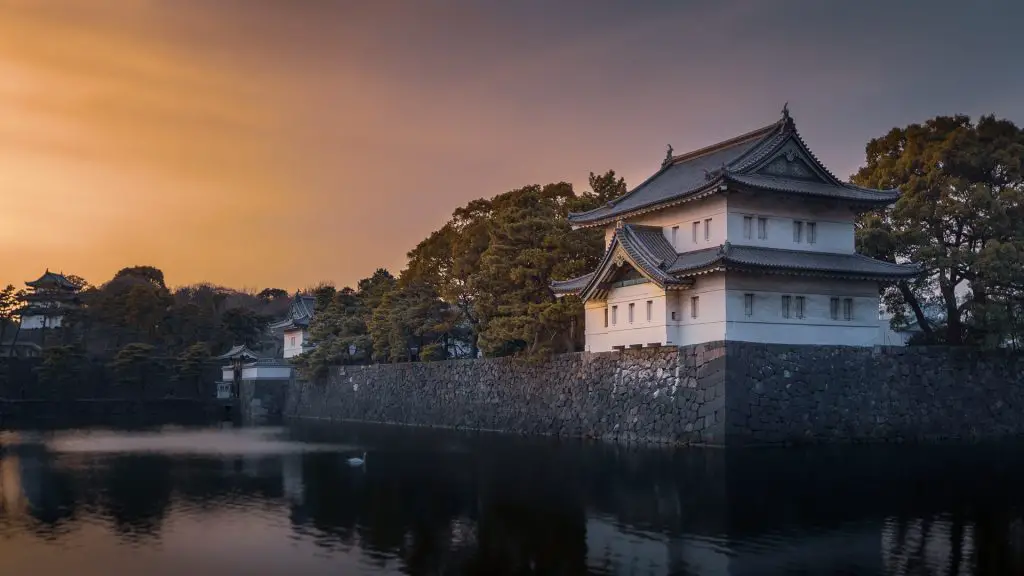
Popular Museums
Tokyo has many fascinating museums to explore, so you’re sure to find one that interests you.
The National Museum is Tokyo’s oldest and largest art museum. It contains a collection celebrating Japan’s cultural heritage over thousands of years.
The Nezu Museum is a fine art museum in the Minato district of Tokyo. It’s home to an impressive private collection of pre-modern Japanese and East Asian art.
Nezu is an easy walk from the bustling fashion district of Omotesando. On route, you’ll pass by boutiques featuring familiar names like Prada and Oscar de la Renta.
Don’t miss the brilliant blue-tiled Yoku Moku Aoyama Flagship Store and Café. Stop for a decadent dessert (like a Matcha Mont Blanc) and coffee or tea in its famous Blue Brick Lounge.
How to get there: From Shinjuku Station, take the Yamanote Line to Shibuya Station. Then walk through fashionable Omotesando Station to the Museum. Note that the museum is closed on Mondays.
Or, if you are more interested in modern art, you might enjoy the Yayoi Kusama Museum, which is devoted to this avant-garde Japanese artist’s work.
And if you have time for a trip out of Tokyo, the Nihon Minka-en Japan Open-air Folk House Museum in nearby Kawasaki City is one of the best places to visit outside Tokyo.
This Museum is home to a collection of 25 Edo-era houses brought to Tokyo from all over the countryside, including everything from thatched-roofed farmers’ homes to samurai houses.
Stroll through Hama-rikju Gardens
One of the loveliest outdoor green spaces in Tokyo, Hama-rikju Gardens is an Edo-period garden with the serene Nakajima Teahouse, walking paths and water features. The Gardens are on the edge of Tokyo Bay, near the Tsukiji Outer Market.
While anytime is a good time to stroll through the calm and quiet Gardens, a spring visit between February and May features the brilliant seasonal displays of plum and cherry blossoms.
How to get there: From Shinjuku Station, take the Oedo or Yamanote Lines to Tsukijishijo or Shimbashi Stations, then walk a short distance to the Gardens.
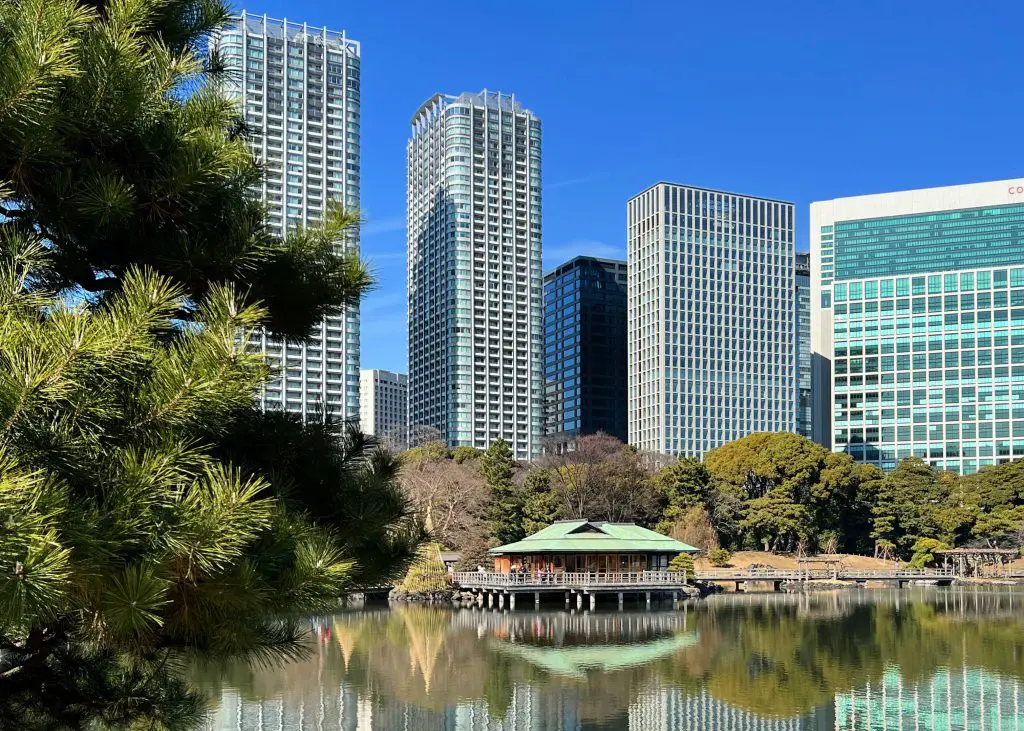
Ascend Tokyo Tower
Tokyo Tower has been a beloved symbol of the city since it was built in 1958, although it gets less attention since Tokyo Skytree opened in 2012.
Towering 1,092 feet above the ground, Japan’s second-tallest structure is a bright orange and white communications tower with a design inspired by the Eiffel Tower.
But it’s still worth a visit to this famous Tokyo landmark, which represents an important rebounding of Japan from the destruction of WWII.
You can view this famous Tokyo landmark from street level or from the nearby Zojo-ji Temple or, alternatively, head up to the tower’s two observation decks to get a great view of Tokyo city. It really does stretch as far as the eyes can see.
How to get there: From Shinjuku Station, take the Oedo Line to Akabanebashi Station, then walk the remaining 10 minutes.
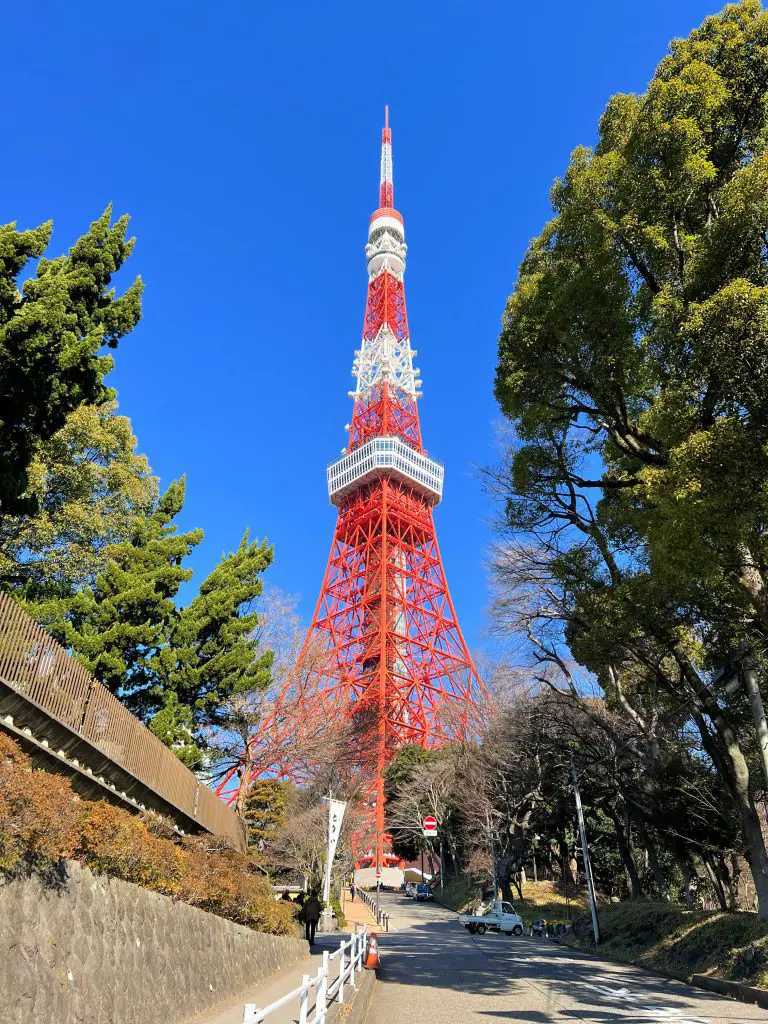
Wander and eat in Omoide Yokocho
This historic, narrow alleyway in the middle of the bustle of Shinjuku City is a must visit. It feels like a throwback to early 20th century city life, but it’s also where you’ll sit elbow to elbow with Tokyo citizens – like a local chief of police in our case.
Enjoy drinking beer, sipping cocktails and sharing small plates of freshly prepared seafood, sushi and grilled meats. It’s fun, social and delicious eating.
How to choose a bar in Omoide Yokocho? Look for busy spots where most of the seats are filled with happy diners. We stumbled on Tatsuchan, run by Kumi Akiyama, a non-nonsense local who kept up a steady service of food and drink in her narrow, rabbit-warren-like bar. It was one of my favorite moments in Tokyo.
How to get there: From Shinjuku Station, walk north 3 minutes.
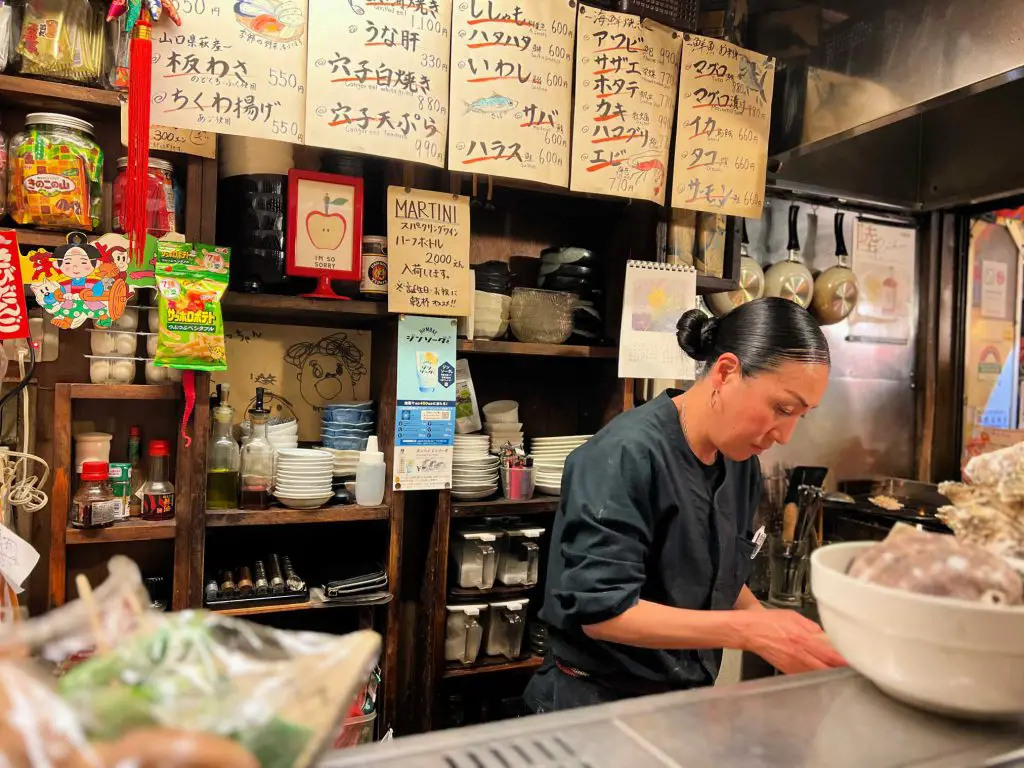
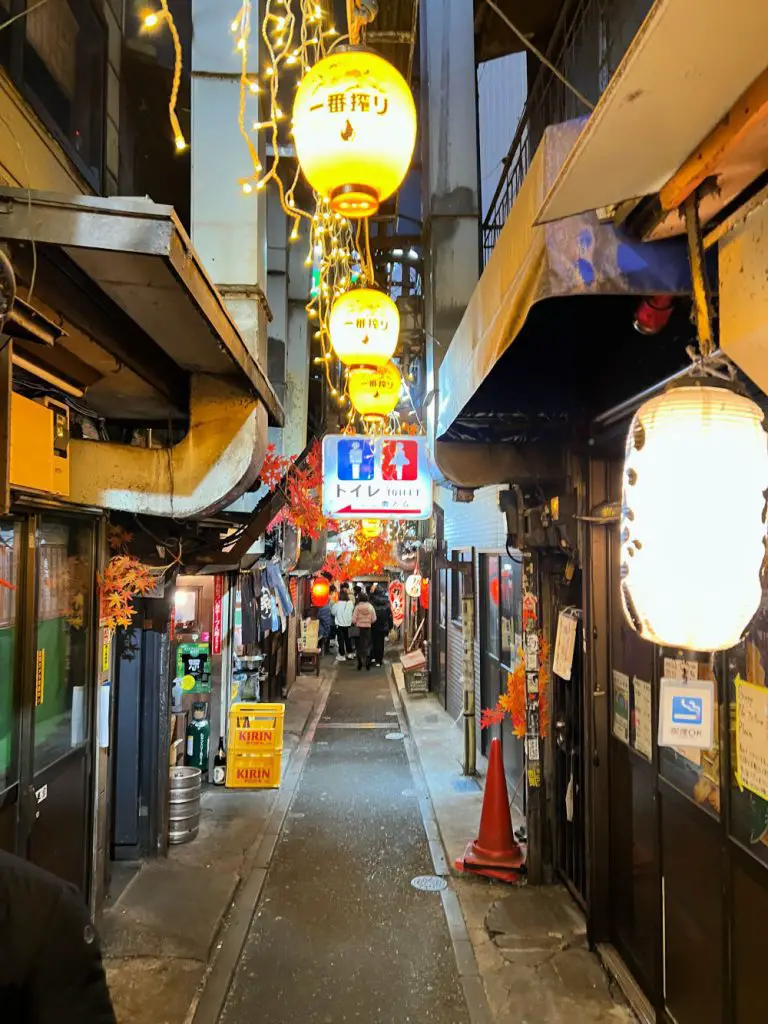
Enjoy the view from Tokyo Skytree
Ascend to the observation decks of Tokyo Skytree, one of the tallest towers in the world. It’s located in Sumida, so to get there, stop at Tokyo Skytree Station on the Tobu Skytree Line or Oshiage Station on the Hanzomon Line.
These are the most convenient ways to get to Skytree and enjoy breathtaking panoramic views of the city.
How to get there: From Shinjuku Station, take the Shinjuku Line to Kundashita Station, then the Hanzomon Line to Oshiage Station.
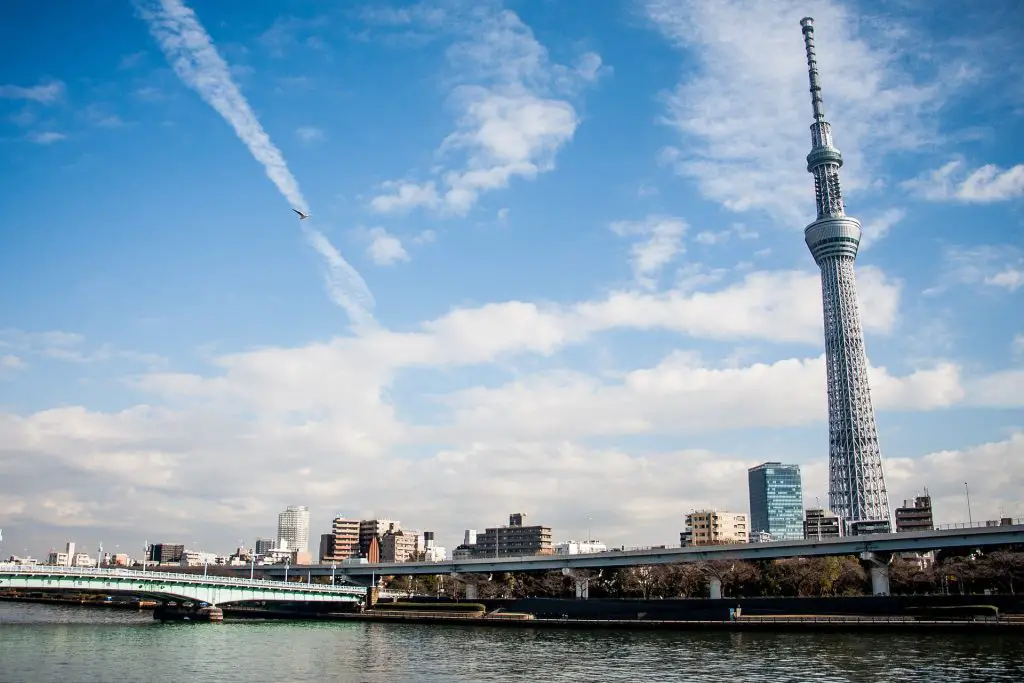
Discover Odaiba
Odaiba (or Daiba for short) is a futuristic island in Tokyo Bay that is devoted to entertainment. What sets it apart from Tokyo’s many other entertainment zones is its more relaxed seaside location. You feel a bit apart from the rest of the city here.
Daiba is home to shopping malls, amusement parks, museums, and the iconic Rainbow Bridge, linking the island to the rest of Tokyo. There’s also a smaller version of the Statue of Liberty located here, erected in 1998 in tribute to Japan’s relationship with France.
How to get there: From Shinjuku Station, take the Yamanote Line to Osaki Station in Shinagawa City; then the Rinkai Line to Tokyo Teleport Station and walk 10 minutes.
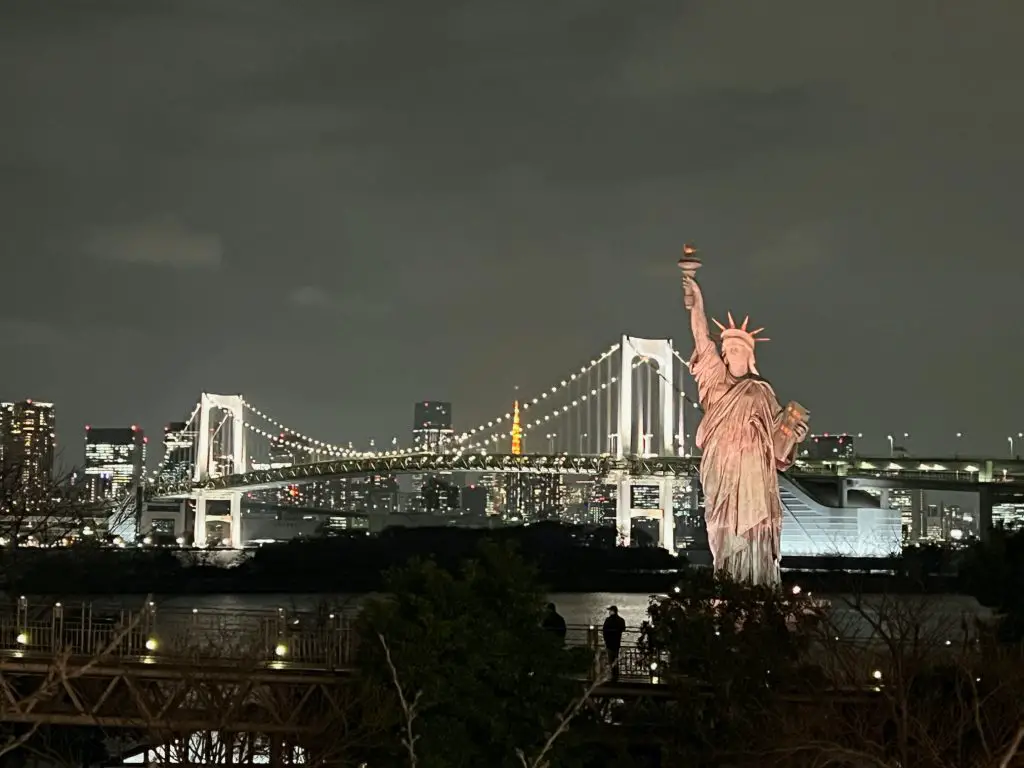
Explore Tsukiji Fish Market – aka Tsukiji Outer Market
The world-famous Tsukiji Fish Market is one of the world’s largest seafood markets, known for its fresh fish and lively auctions.
Before 2018, Tsukiji Market was divided into two areas. The “inner market” was where wholesale fish are sold. It used to be the largest fish market in the world.
The inner market was popular for its tuna action every morning, attracting thousands of local and foreign tourists. The “outer market” was famous for fresh fish and other seafood cooked at restaurants and food stalls outside the market.
In 2018, wholesale fish vendors of the inner market had to move to the new Toyosu Fish Market, closer to central Tokyo. The vendors at Tsukiji Outer Market have remained, still serving fresh seafood sourced from the new Toyosu Market, and minus a bit of its hustle and bustle.
Tsukiji Outer Market is now the name of the area. You might still hear the name Tsukiji Fish Market or Tsukiji Market, but don’t be confused. They still refer to the same place.
How to get there: From Shinjuku Station, take the Oedo Line to Tsukijishijo Station, then walk 5 minutes.
Use the map below to search for hotel and short-term rental options
And if you have an extra day and are a Disney fan…
Discover Tokyo Disneyland or Tokyo DisneySea
While it may seem odd to travel to Japan to visit Disneyland, many people do it and love it. So, if a day of fun and magic at Tokyo Disneyland or DisneySea is up your alley, you won’t be disappointed in these Japanese Magic Kingdoms.
Now, there are some differences between Tokyo Disneyland and Tokyo DisneySea. Disneyland has seven themed zones and all the great Disney magic you’d expect, including Fantasyland, Tomorrowland and Adventureland. Plus Cinderella’s Castle, familiar characters, thrilling rides and shows.
Tokyo DisneySea is a fantasy theme park within Tokyo Disney Resort that is unique to Japan. Inspired by the myths and legends of the sea, Tokyo DisneySea is made up of seven themed ports of call and appeals to a more grown-up audience.
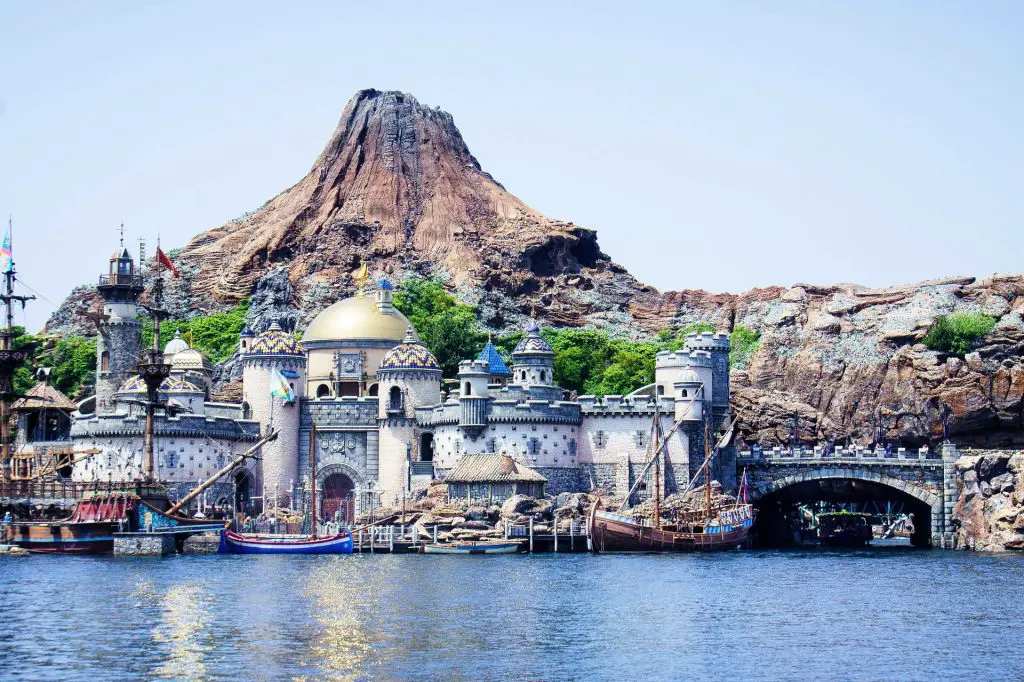
Within the Disney-verse, DisneySea is one-of-a-kind, and features really good Japanese food at a wide variety of restaurants, and alcoholic bevvies not found at the neighboring park.
Is Tokyo DisneySea worth it? If you only have time for one park, pick Tokyo DisneySea for a truly unique Disney experience that you can only find in Japan.
How to get there: Tokyo Disney Resort is located in Uruyasu, Chiba prefecture. From Shinjuku Station, take the Chuo Line to Tokyo Station, then the Keiyo Line to Maihama Station. The trip will take about an hour.
Where to stay in Tokyo: accommodation options
Tokyo has a truly impressive and wide range of accommodation options. From Western-style hotels and hostels to modern capsule hotels and traditional ryokans that you will only find in Japan, it can be challenging to navigate your way through the city’s many hotel offerings. We have a few suggestions, ranging from budget to luxury.
Tokyo Hotels Budget
The &AND Hotel Asakusa Kappabashi offers air-conditioned double rooms at a reasonable price, each with a private bathroom and free WiFi. It’s also in a great location for Tokyo sightseeing, just a few minutes walk from Rinko-ji Temple and 4 miles from the city centre.
Tokyo Hotels Mid-range
The four-star sequence Suidobashi is a beautiful, modern hotel with excellent facilities. Each air-conditioned room has free WiFi, and there is a bar and restaurant on-site. This hotel is well located for visiting Tokyo sites like the Imperial Palace and the Misaki Inari Shrine.
Another option is the centrally located Keio Plaza Hotel in Shinjuku, a lively Tokyo neighbourhood. The large hotel is close to the city’s metro system, including to the massive Shinjuku Station. Airport Limousine Buses will also stop here. You can arrange scheduled pickups online.
The hotels rooms are comfortable, and include Queen beds, free WiFi, and those amazing, warm, wet and wild Japanese toilets that I could not get enough of. There was also a bathtub, which I used for my own nightly onsen.
The Keio Plaza Hotel has several in-house dining options. The hotel’s breakfast buffet is on the pricier side, but you can order a la carte items.
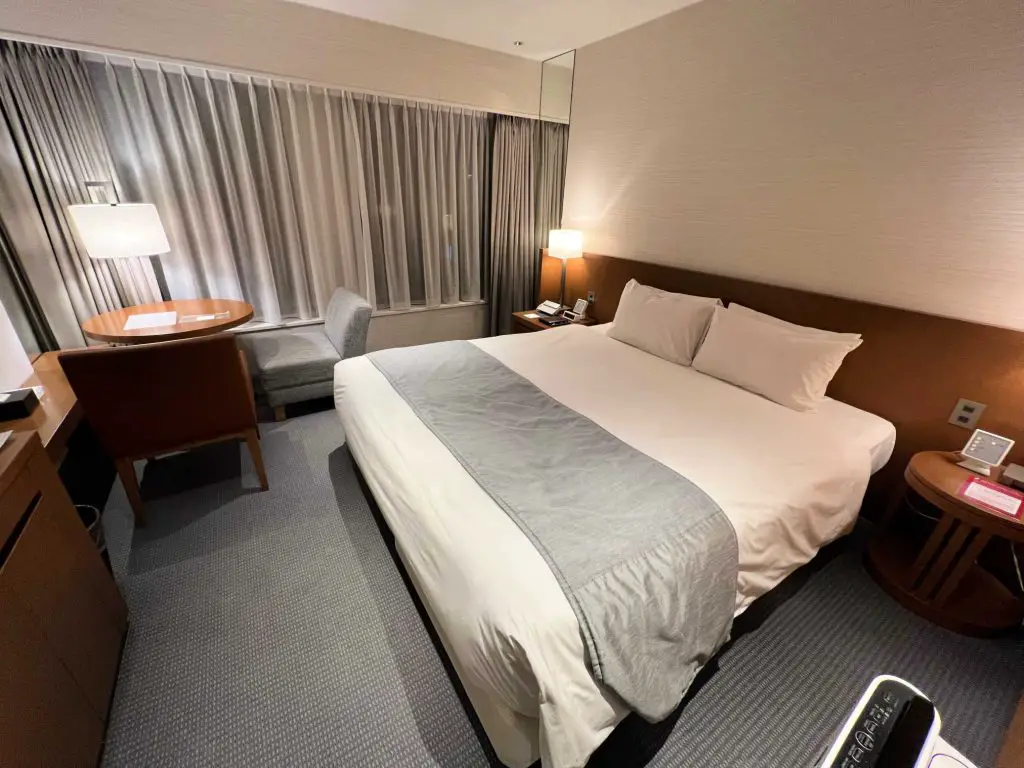
Luxury Tokyo Hotels
The five-star Kitano Hotel Tokyo is a fantastic choice for sheer luxury and a great location. The beautifully decorated rooms all have free WiFi, complimentary toiletries, a kitchenette or fully-equipped kitchen, and a seating area.
Guests can visit the on-site beauty salon and acupuncture therapist or enjoy traditional Japanese tea at the tea salon. The hotel also has two restaurants on-site, including the 1-starred Michelin restaurant, Sant Pau.
How to get around Tokyo
To access Tokyo’s incredible and complex subway system, you’ll need a PASMO or SUICA card. They’re not only good for the metro system, you can also pay for drinks at the city’s fabulous vending machines. The cards are also accepted at many city restaurants and shops.
They’re nearly identical, and you can purchase them at any Metro station. But if you need to travel on a JR line outside of Tokyo, you’ll need the Suica card. There is a special version of Suica, called Welcome Suica, is available to foreign tourists. You can purchase it at Narita and Haneda Airports, and at the larger Tokyo Metro stations. The special cards are valid for only four weeks, come without a deposit fee, but do not allow for refunds.
Pin for Later
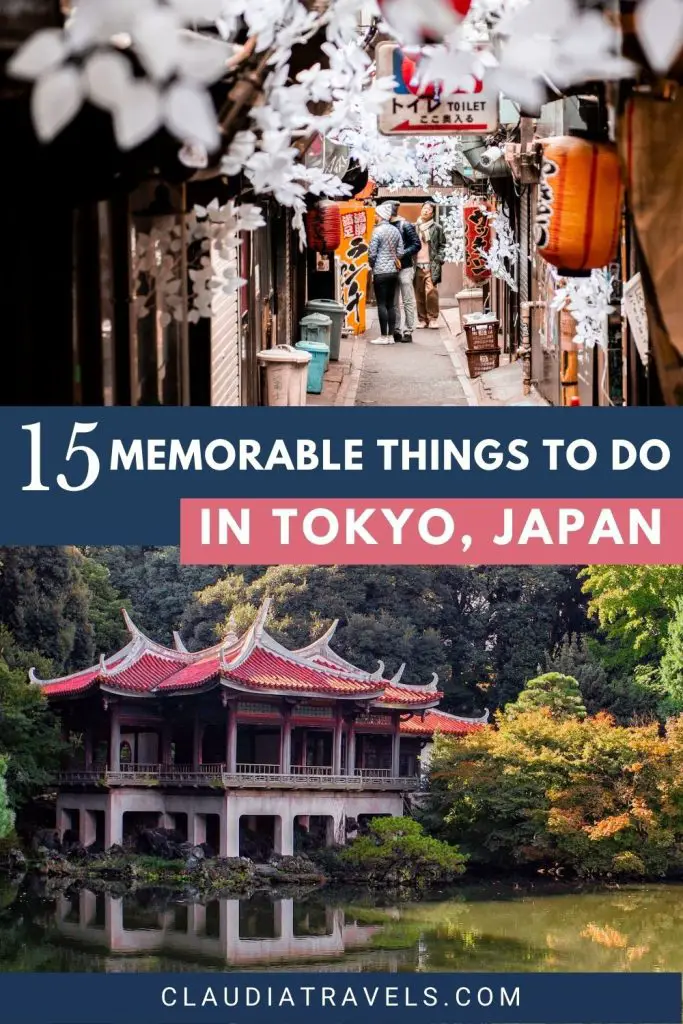
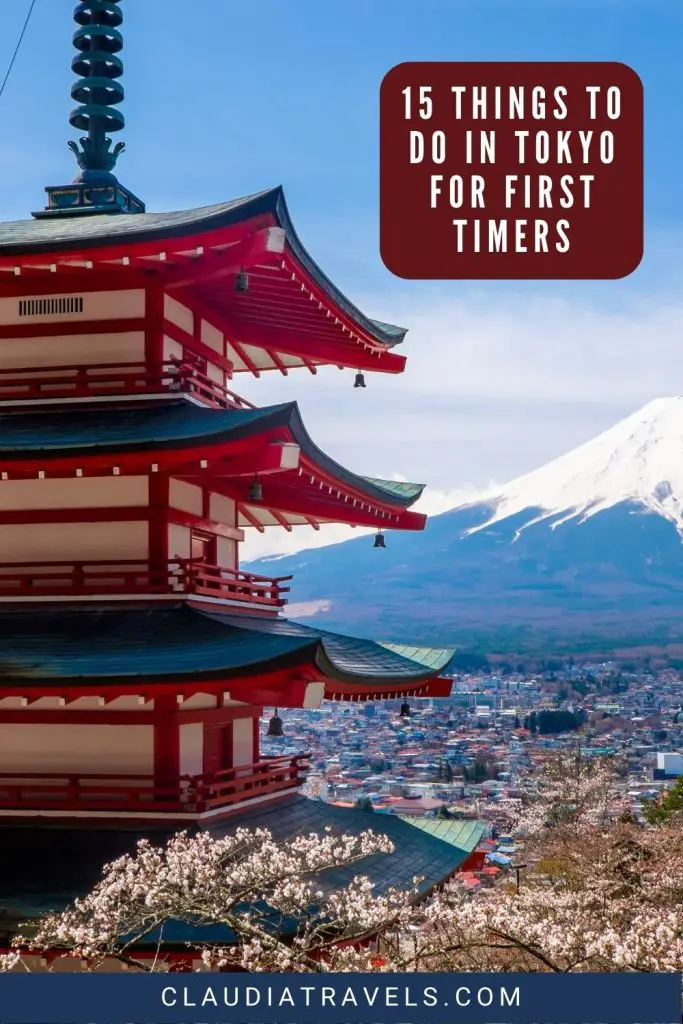
Photo credits: Claudia Laroye, Pixabay
Disclosure: The writer thanks Tokyo Tokyo Tourism for hosting her stay in Tokyo.
- I hiked the Fjällräven Classic and here’s how you can too - June 27, 2024
- 2024 TMAC Awards: story time from The Rock - June 17, 2024
- 7 Steps to Planning Multigenerational Travel - May 31, 2024

